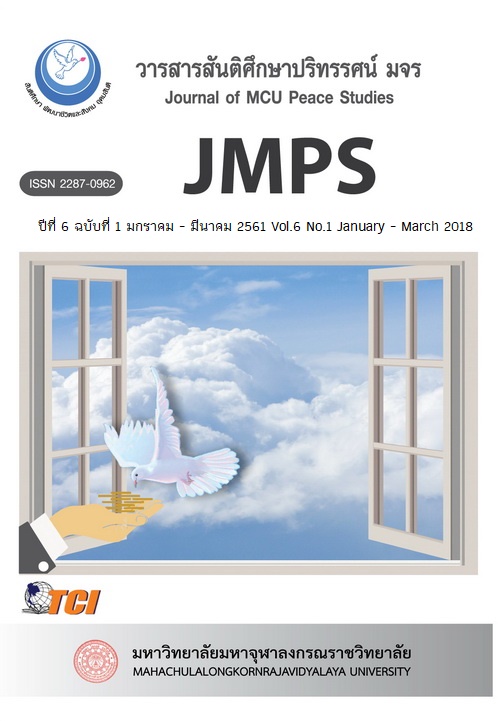Organizational Conflict Management Model for the Automotive Industries in Eastern Region
Main Article Content
บทคัดย่อ
This study aimed to study the causes of conflict and conflict management model in the organization of Eastern automotive industries to present the conflict management policy in the organization of Eastern automotive industries. The researcher used qualitative research methods by synthesis the Labor Lawsuit, Labor Court, Region 2 at Rayong Province. There were 978 lawsuits, 432 unconfirmed lawsuits and 546 lawsuits were settled in 2013 - 2057 litigated and a court case has been finalized. By specifying the size of the sample from the Krejcie & Morgan (1970) formula, the sample size was 280 lawsuit cases. Then take an in-depth interview with industry judges and executives involved in 9 lawsuits. The researcher conducted a specific interview (Purposive Smiling) or only those involved in the prosecution case.
The study results;
1. The cause of the conflict is 1) the information must be clear 2) the benefits can be acceptable to both parties 3) the appropriate structure management within the organization good 4) good relationship must be respected to each other 5) have a good attitude, values & trust each other 2. Conflict management model has 7 methods that as 1) Conflict management with Compromise method 2) Mediation method 3) Reconciliation method 4) Collaborative approach 5) Avoidance methods 6) Confrontation methods and 7) Force method. 3. Good conflict management policies must be in accordance with the labor law that provides for the rights and duties of employers, employees who are required to deal with each other clearly. Reducing Employment Abused to be fair to both parties, it is important to realize that employees and employers have mutual interest and creative a good working atmosphere without prejudice and destruction to each other.
Article Details
ทัศนะและความคิดเห็นที่ปรากฏในบทความในวารสาร ถือเป็นความรับผิดชอบของผู้เขียนบทความนั้น และไม่ถือเป็นทัศนะและความรับผิดชอบของกองบรรณาธิการ ยินยอมว่าบทความเป็นลิขสิทธิ์ของวารสาร
References
Azar, E. (1990). The Management of Protracted Social Conflict: Theory and Cases. Aldershot: Dartmouth.
Barsky, A. E. (2000). Conflict Resolution for the Helping Professions. Belmont, CA:Brooks/Cole-Wadsworth.
Blalock, Jr., H.M. (1989). Power and Conflict. Thousand Oaks, CA: Sage.
Costantino, C. A., and Merchant, C. S. (1996). Designing Conflict Management Systems: A Guide to Creating Productive and Healthy Organizations. San Francisco: Jossey Bass.
Chung, K. H., and Megginson, L. C. (1980). Organization behavior: Developing managerial skill. New York: Harpers & Row.
Johnson, D.W., and Johnson, R.T. (1987). Cooperation and competition: Theory and research. Edina, MN: Interaction Book.
Nahavandi, A., and Malekzaheh, A. (1999). Organizational Culture in the Management of Mergers. Westport: Quorum Books.
Office of Small and Medium Enterprises Promotion. (2016). Define SMEs. [Online]. Retrieved May 16 2016 from http://www.sme.go.th
Robbins, S.P., and Judge, T.A. (2007). Principles of organizational behavior. (13th ed). New Jersey: Pearson Education.
The Thai Automotive Industry Association. (2016). Thai Automotive Industry. [Online]. Retrieved; March 23, 2016 from http://library.dip.go.th/multim5/News/ 2559/N07989.pdf
Thomas, K. W., and Kilmann, R. H. (1987). Thomas-Kilmann Conflict Mode Interest. New York: X/COM Incorporated.

